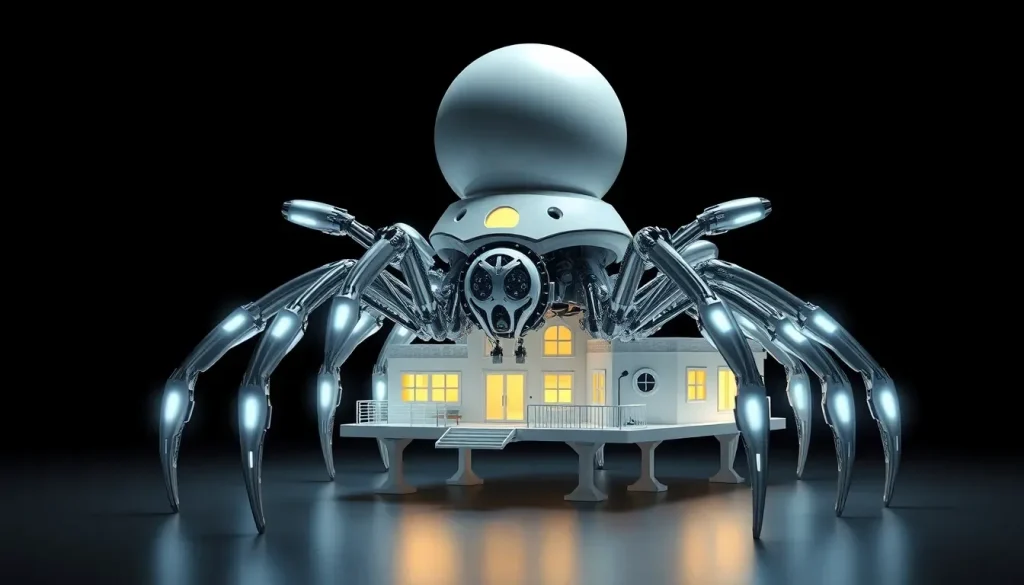Spider robot could solve housing crisis by 3D printing homes in one day

In an era where housing prices are skyrocketing, especially for younger generations, innovative solutions are becoming increasingly critical. The pressing issue of affordability in housing is leading to an exploration of technology that could revolutionize the way we build homes. Enter Charlotte, a remarkable robotic spider designed to print houses in just a day, offering a beacon of hope in the ongoing housing crisis.
The current situation in Spain is particularly dire, with soaring rental and purchase prices that consume significant portions of salaries. Even in smaller towns, housing costs are climbing as demand continues to outstrip supply. The COVID-19 pandemic exacerbated these issues, leading to a dramatic rise in property prices, making it more challenging for many to secure stable housing.
Introducing Charlotte: The Robotic Spider Capable of 3D Printing Homes
Charlotte, developed by Crest Robotics in collaboration with Earthbuilt Technology, is an innovative prototype aimed at addressing the housing crisis through advanced technology. This hexapod robot, equipped with six legs, is designed to navigate rugged terrains effortlessly and operate autonomously, showcasing a remarkable blend of engineering and functionality.
The demand for housing in many countries far exceeds the available supply, and Spain is no exception. Various factors contribute to this crisis, including:
- Limited new construction: The number of homes being built is insufficient to meet growing demand.
- Impact of tourism: High numbers of tourists drive up rental prices, particularly through platforms like Airbnb.
- Foreign investment: Investors capitalizing on the housing market inflate prices further.
Charlotte aims to address these challenges head-on by offering a rapid, cost-effective solution to housing shortages. The robot's design allows it to construct homes quickly, utilizing a variety of local materials, which not only reduces costs but also minimizes transportation emissions.
Building Affordable Homes with Reduced Carbon Footprint
One of the most impressive features of Charlotte is its ability to use locally available materials for construction. The robot employs a method known as "earthbag" construction, which involves:
- Utilizing local soil: This reduces the need for extensive material transport.
- Low costs: The use of earth and local materials significantly cuts down on expenses.
- Rapid deployment: The technique allows for swift construction of durable structures.
This method has historically been used for creating structures such as:
- Dikes
- Military bunkers
- Emergency shelters
Moreover, Charlotte is designed not only to tackle housing issues on Earth but also to venture into extraterrestrial constructions, such as lunar bases. This ambitious vision involves utilizing lunar regolith—loose materials found on the Moon's surface—making it possible to establish sustainable living conditions beyond our planet.
The Future of Construction: Ambitions and Challenges
While the concept of Charlotte is groundbreaking, it remains largely theoretical at this stage. The implications of such technology could be transformative, but several hurdles must be overcome before these robots can start building real homes. Key challenges include:
- Technological development: Advancements in robotics and 3D printing must continue to refine the capabilities of Charlotte.
- Materials processing: Efficiently utilizing local materials for construction requires further research.
- Regulatory hurdles: Navigating building codes and regulations for new construction methods can be complex.
As we look to the future, the integration of Charlotte into our construction practices could represent a major shift in how we approach housing crises, not just in Spain but globally. For a more in-depth look at how 3D printing technology is shaping the future of construction, check out this video showcasing a similar robot's capabilities:
Global Implications of Robotic Construction
The potential applications of robots like Charlotte extend far beyond the confines of traditional housing. With the world facing housing shortages and the impacts of climate change, the ability to construct homes swiftly and sustainably could reshape entire communities. This has implications for:
- Disaster relief: Rapidly building shelters after natural disasters.
- Urban development: Addressing housing shortages in rapidly growing cities.
- Space exploration: Establishing human habitats on other planets.
As the technology advances, it will be vital to ensure ethical considerations are made regarding land use and the environment. The development of robots like Charlotte could lead to a paradigm shift in construction, but it must be approached with care and consideration.
Conclusion: The Path Ahead
Charlotte represents a glimpse into the future of construction, where technology plays a pivotal role in solving pressing global challenges. While it may take time for such innovations to become a reality, the vision of 3D-printed homes could pave the way for a more affordable and sustainable future for housing.




Leave a Reply